BlogRSS
Defying Boundaries: exhibition ‘Across Japan’ at Modemuseum Hasselt
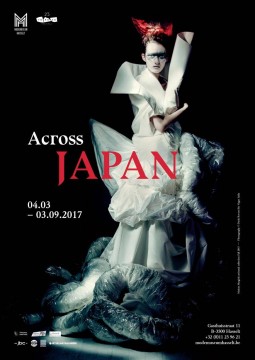
The encounter between East and West is usually that of two traditions whose boundaries are clearly set.The exhibition Across Japan, at Modemuze Hasselt from, is a fascinating way to show how these boundaries, sharply defined only in appearance, are indeed blurred.
Fashion and Design – Technology
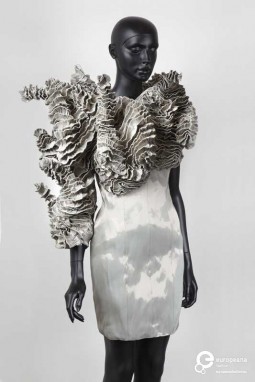
Fashion and design share a common language, owing much to each other progress. Although their products are usually different - in terms of use, material and destination - they ways the one influences the other are many and disparate. Technology, in particular, serves as an instrument for both design and fashion and the improvements each field makes, turn out to be new instruments in the hands of the other.
Runway Archive: Helmut Lang, A/W 1989-90
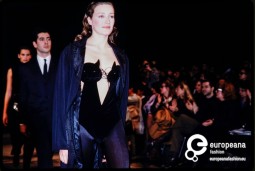
The picture captures the final moment of the a/w 1989-90 fashion show by Helmut Lang. On the foreground, a model sports one of the designer’s most evocative creations, a bodysuit shaped as the silhouettes of two black cats, whose whiskers ties to make it tighter.
Exhibition Archaeology: ‘Stretching Boundaries, Fashion and Beyond’
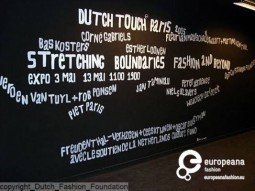
One of the most interesting features of fashion is its geographical specificity, which leads to the privileged ability fashion has to gather and represent national identities. In 2005, the exhibition Stretching Boundaries, Fashion and Beyond presented in Paris and New York, had exactly this aim: showcase the peculiarities and characters of the contemporary Dutch fashions scene.
Europeana Fashion Focus: Ensemble, Christian Dior, 1970s
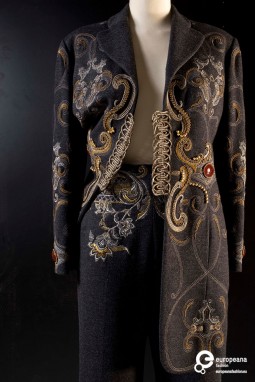
The ensemble is composed by a long jacket and a pencil skirt; both items are made of grey wool and decorated with intricate embroideries in silver and golden thread. It is a creation of the Maison Christian Dior from the 1970s.
Runway Archive: Giorgio Armani, Pitti Uomo 15, 1979
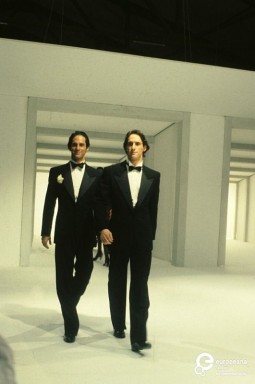
The picture shows two elegant looks styled by two male models; the models are wearing two similar tuxedos - or dinner suits - composed by loose trousers, long jackets with wide lapels, white shirts; the looks are completed by papillons, and one of them shows a boutonnière on the right side of the jacket. The two outfits belong to Giorgio Armani's 1979 collection, shown in Florence in occasion of Pitti Immagine 15.
The Toile. Between finished and unfinished
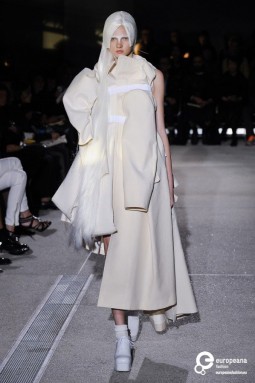
Conventions in dress are sometimes boundaries that cannot be easily crossed. This is valid for fabrics as well, whose material qualities sometimes limit their use for one or another occasion; while some fabrics command their use in some proper settings, one in particular, the toile, even rules over the definition of product and prototype.
On Pink, Blue and other Myths: Divided by Colours
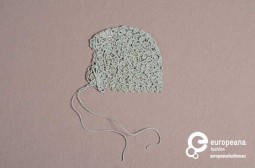
Colour, in clothing and accessories, is one if not the most straightforward element speaking of the wearer. Not only it is significant of tastes and personal preferences, but it can easily become charged with cultural relevance, when used in a precise historical and geographical context.
Fashion can indeed set the boundaries of identity though colours. Historically, some colours were reserved to some strata of society, being used as disclaimer to associate a person to a particular class; this is the case of gold, whose use was restrained by sumptuary laws in the early modern period, given its ideal link to wealth and high status; same can be said of purple, which in the Tudor period in England was especially reserved to kings, queens and some members of the aristocracy. Colours are charged of different meanings – some times, almost opposites – in different cultures: for instance, while black is accounted as the colour of mourning in Europe since the Roman Empire, in Asia the colour used by people participating in mourning is white.
Sometimes the meaning of colours can shift through times, originating tropes and myths that are hard to die out, even though there are no apparent reasons for their existence. Maybe the most widespread of the ‘myths’ surrounding colours is the binary that wants pink associated with girls and blue with boys. While white was the most practical and neutral colour of children clothing during the nineteenth century, it was at the beginning of twentieth century that pastel colours for babies were introduced. Museums and archives that feature children clothing from the late nineteenth and early twentieth centuries in their collections are useful to challenge the trope that associates colours to genders. In fact, interestingly enough, in 1918 an account on the american newspaper Ladies’ Home Journal stated that ‘The generally accepted rule is pink for the boys, and blue for the girls. The reason is that pink, being a more decided and stronger color, is more suitable for the boy, while blue, which is more delicate and dainty, is prettier for the girl.’ this demonstrates that the ’trope’ as we know it today – pink for girls and blue for boys – is quite recent: it started being used and marketed during the 1940s. It got periodically reinforced ever since, setting a ‘contemporary’ boundary that is now heavily criticised: a sign of a changing sensibility within society, that might change again the perception future generations will have of these colours – and of their power to create categories.
Runway Archive: Isaac Mizrahi, A/W 1997-1998

Isaac Mizrahi, Autumn-Winter 1997-1998, Photo by Etienne Tordoir, Courtesy Catwalk Pictures, All Rights Reserved
The look shown in the picture is composed by a long, sleeveless dress gently flowing on the body of the model, and completed by white sandals. The dress is made of two layers: a basis in sheer, pale pink fabric and a net of shimmering material. The outfit belongs to Isaac Mizrahi’s Autumn-Winter 1997-1998 Womenswear collection, shown in New York.
Isaac Mizrahi is an American fashion designer trained at Parsons School of Design. He comes from a Syrian Jewish family, and it was his family to favour his entering into the fashion world: at the age of 15, he received a sewing machine from his father. He started his eponymous label in 1987 in New York, where the collection was presented in a trunk show held by Bergdoorf Goodman. Apart for his feminine and refined designs, chosen by many celebrities for public events, Mizrahi is also known for his interest in media and performance: he took part to several TV programmes throughout the 1990s and 2000s, and collaborated with many institution as costume designer. The making of his 1994 collection was turned into a documentary, called ‘unzipped’.
From (Selv)edge to (Selv)edge
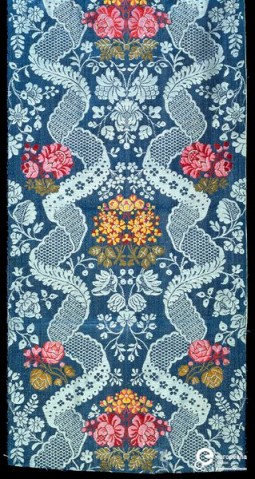
Fabric is essential to fashion, whether its shape or dimension, it often delimits the material area in which designers and tailors can experiment to resolve their ideas. In this way, the boundaries of fabric are translated into the boundaries of fashion itself, whose definition is then from selvedge to selvedge.


